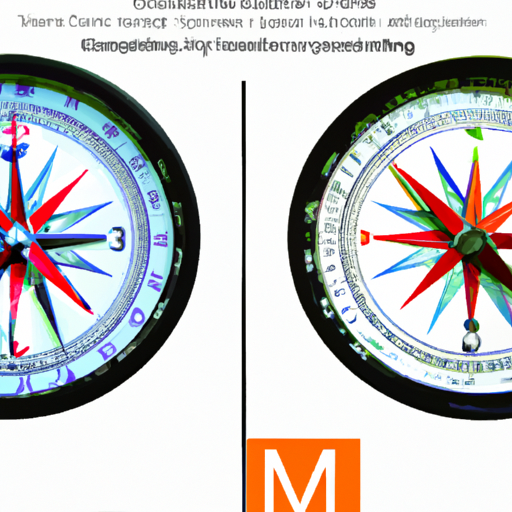How Do IT Services Assist In Product Lifecycle Management?
Are you in the business of product development and management? If so, you’ll be intrigued to discover how IT services can play a crucial role in enhancing your product lifecycle management. From streamlining processes to optimizing communication channels, IT services offer valuable solutions that can improve efficiency and productivity throughout every stage of your product’s journey. Let’s explore the ways in which IT services can transform your product lifecycle management and take your business to new heights.
Importance of IT Services in Product Lifecycle Management
Product lifecycle management (PLM) is the process of managing a product from its inception, through design and manufacture, to its retirement or disposal. In today’s fast-paced and globally interconnected business environment, IT services play a crucial role in supporting and enhancing the various stages of the product lifecycle.
Enhancing Collaboration and Communication
Collaboration and communication are vital for successful product development and management. IT services offer a range of tools and platforms that enable seamless virtual collaboration and real-time communication among different teams and stakeholders.
Virtual collaboration tools allow team members to work together on projects, regardless of their physical location. These tools enable real-time sharing of information, files, and documents, fostering a collaborative work environment where ideas can be shared and refined on a global scale.
Real-time communication platforms, such as video conferencing and instant messaging, facilitate instant and effective communication between team members, regardless of their geographical location. These platforms allow for quick decision-making, problem-solving, and efficient coordination among team members.
Shared document repositories provide a central location for teams to store and access project-related documents and files. This ensures that everyone has access to the most up-to-date information, reducing the risk of miscommunication or redundancy.
Streamlining Data Management
In the age of big data, managing and organizing data efficiently is crucial for successful product lifecycle management. IT services offer various solutions to streamline data management processes.
Centralized data storage and accessibility systems provide a single location for storing and accessing all product-related data. This simplifies data management and ensures that all team members have access to the most relevant and up-to-date information.
Data integration and interoperability solutions allow different systems and applications to seamlessly exchange and share data. This eliminates data silos and enables a holistic view of the product lifecycle, enabling better decision-making and collaboration.
Master data management involves creating and maintaining a single, consistent view of critical data across the organization. This ensures data accuracy, improves data quality, and eliminates duplicate or conflicting information.
Improving Product Planning and Design
IT services offer a range of tools and solutions to improve product planning and design processes, enabling faster and more efficient product development.
Computer-Aided Design (CAD) and Product Lifecycle Management (PLM) software are essential tools in product design and development. These software applications allow designers to create and visualize product designs in a virtual environment, enabling rapid prototyping, experimentation, and design optimization.
Simulation and modeling tools enable engineers to test and validate product designs before physical prototypes are built. These tools help identify potential design flaws and optimize products for performance, efficiency, and reliability.
Digital prototyping and visualization solutions allow designers and engineers to create realistic 3D models of products and simulate their behavior in various scenarios. This enables stakeholders to visualize and understand the final product before it is manufactured, reducing the risk of costly design changes or rework.
Optimizing Manufacturing and Production Processes
IT services play a vital role in optimizing manufacturing and production processes, improving efficiency, quality, and agility.
Enterprise Resource Planning (ERP) systems integrate various business functions, including manufacturing, inventory management, sales, and finance. These systems provide real-time visibility into manufacturing processes, enabling better planning, scheduling, and resource allocation.
Manufacturing Execution Systems (MES) bridge the gap between the shop floor and the ERP system. These systems provide real-time monitoring of production processes, enabling better control, quality assurance, and data collection for analysis.
Quality assurance and control systems help ensure that products meet the required quality standards. These systems enable real-time monitoring, inspection, and testing of products during the manufacturing process, reducing the risk of defects and ensuring consistent quality.
Facilitating Quality Control and Testing
IT services offer various tools and technologies to facilitate quality control and testing, ensuring that products meet the required quality standards.
Automated testing and inspection systems automate the testing and inspection processes, reducing the time and effort required for manual testing. These systems can perform a wide range of tests and inspections, including dimensional analysis, surface quality inspection, and functional testing.
Data analytics and machine learning techniques can be applied to quality analysis, enabling the identification of patterns, trends, and anomalies in large datasets. These insights can help improve product quality, identify potential issues early on, and optimize manufacturing processes.
Managing Supply Chain and Logistics
IT services play a crucial role in managing supply chain and logistics operations, ensuring efficient and effective movement of materials, components, and finished products.
Inventory management systems enable accurate tracking and control of inventory levels, minimizing stockouts and overstock situations. These systems provide real-time visibility into inventory levels, demand, and supply, enabling better planning and optimization of inventory levels.
demand forecasting and planning tools use historical data, market trends, and statistical models to predict future demand for products. These tools help organizations better plan for production, procurement, and distribution, ensuring that products are available when and where they are needed.
Waste and cost reduction solutions help identify and eliminate inefficiencies in the supply chain, reducing waste, costs, and environmental impact. These solutions leverage data analytics and optimization techniques to identify opportunities for improvement and suggest alternative processes or suppliers.
Enabling Customer Relationship Management
IT services enable organizations to effectively manage customer relationships, understand their needs, and deliver personalized experiences.
Customer data management systems consolidate and centralize customer data from various sources, such as sales, marketing, and customer support. These systems provide a comprehensive view of each customer, enabling organizations to better understand their needs, preferences, and behaviors.
Sales and service automation tools automate sales and service processes, improving efficiency and productivity. These tools enable the automation of tasks such as lead management, order processing, and customer support, freeing up time for sales and service teams to focus on building relationships and delivering value.
Customer feedback and support systems provide channels for customers to provide feedback, ask questions, and seek assistance. These systems enable organizations to collect and analyze customer feedback, identify areas for improvement, and address customer concerns in a timely manner.
Supporting Maintenance and After-Sales Services
IT services support maintenance and after-sales services, ensuring that products continue to perform optimally and customer expectations are met.
Remote monitoring and diagnostics systems enable real-time monitoring of products in the field. These systems collect data from sensors and connected devices, enabling proactive maintenance, troubleshooting, and remote diagnostics. This helps minimize downtime, reduce the need for physical inspections, and improve customer satisfaction.
Warranty and service management systems streamline the management of warranties, service contracts, and maintenance schedules. These systems enable efficient tracking and management of warranty claims, service requests, and maintenance activities, ensuring timely and accurate service delivery.
Field service management tools enable organizations to optimize the dispatching and scheduling of field service technicians. These tools provide real-time visibility into technician availability, location, and skills, enabling efficient allocation of resources and timely response to service requests.
Ensuring Regulatory Compliance
IT services play a crucial role in ensuring regulatory compliance throughout the product lifecycle. Regulatory requirements and standards vary across industries and jurisdictions, and failure to comply can result in severe penalties, damage to reputation, and legal disputes.
IT services enable organizations to manage and monitor compliance with regulatory requirements, ensuring that products meet safety, quality, and environmental standards. This includes tracking and documenting compliance activities, maintaining audit trails, and generating compliance reports.
IT systems can also help automate compliance processes and workflows, reducing the reliance on manual procedures and minimizing the risk of human error. These systems can generate alerts and notifications for compliance deadlines, facilitate documentation and record-keeping, and provide visibility into compliance status and performance.
Enhancing Decision-Making and Analytics
IT services support decision-making and analytics throughout the product lifecycle, enabling organizations to make data-driven decisions and gain valuable insights.
Business intelligence and analytics platforms enable organizations to collect, analyze, and visualize data from various sources, enabling better decision-making. These platforms provide dashboards, reports, and interactive visualizations that allow stakeholders to gain valuable insights into performance, trends, and opportunities.
Predictive analytics and forecasting models leverage historical data, statistical algorithms, and machine learning techniques to predict future trends, demand, and performance. These models enable organizations to anticipate market changes, identify potential issues, and optimize operations for better outcomes.
Data visualization and reporting tools facilitate the presentation of data in a visual format, making it easier to understand and interpret. These tools enable stakeholders to identify patterns, trends, and outliers, enabling more informed decision-making and effective communication of insights.
In conclusion, the importance of IT services in product lifecycle management cannot be overstated. From enhancing collaboration and communication to improving decision-making and analytics, IT services enable organizations to streamline processes, optimize resources, and deliver products that meet customer expectations and regulatory standards. By leveraging the power of technology, organizations can achieve greater efficiency, agility, and competitiveness in the ever-evolving global market.








